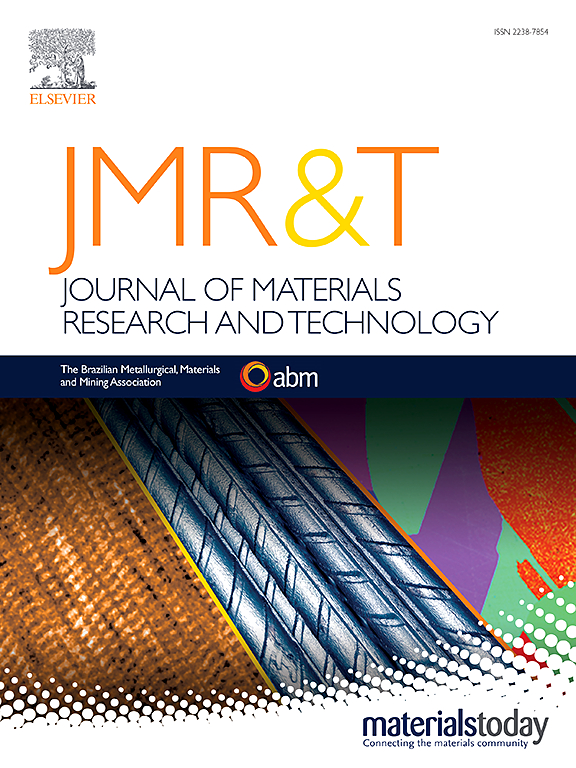Temperature-dependent mechanical properties of as-cast Mg-Gd-Zr alloys evaluated by shear punch testing
IF 6.2
2区 材料科学
Q1 MATERIALS SCIENCE, MULTIDISCIPLINARY
Journal of Materials Research and Technology-Jmr&t
Pub Date : 2025-03-14
DOI:10.1016/j.jmrt.2025.03.125
引用次数: 0
Abstract
The temperature-dependent shear mechanical properties of Mg-3Gd-xZr (x = 0, 0.2, 0.5, and 0.8 wt%) alloys were investigated using the shear punch testing (SPT) across a temperature range of 25–400 °C. The Zr addition led to a remarkable grain refinement, where the average grain sizes of 348 ± 43, 101 ± 39, 42 ± 8, and 23 ± 4 μm were obtained for x values of 0, 0.2, 0.5, and 0.8, respectively. This refinement improved the ultimate shear strength (USS), which peaked at 115 MPa for testing at 25 °C for the 0.8 wt% Zr alloy, compared to the value of 92 MPa for the Zr-free sample. As the temperature increased above 300 °C, a transition from the cold deformation regime to the hot working one occurred, leading to a sharp decline in USS and a reduced sensitivity of flow stress to the grain size, which manifested itself into the rapid fall of the Hall-Petch slope. For the hot working range, the dislocation glide and climb in the climb-controlled regime was characterized as the underlying deformation mechanism with the activation energy ranging from 135 to 168 kJ/mol. These findings elucidate the interplay between grain refinement, temperature, and deformation mechanisms, providing a foundation for the application of Mg alloys in high-performance situations.
用剪切冲孔试验评价铸态Mg-Gd-Zr合金的温度相关力学性能
在25-400℃的温度范围内,采用剪切冲孔试验(SPT)研究了Mg-3Gd-xZr (x = 0、0.2、0.5和0.8 wt%)合金的剪切力学性能随温度的变化。当x值为0、0.2、0.5和0.8时,Zr的加入使晶粒细化,平均晶粒尺寸分别为348±43、101±39、42±8和23±4 μm。这种细化提高了极限抗剪强度(USS),在25°C下测试时,0.8 wt% Zr合金的极限抗剪强度达到115 MPa,而无Zr样品的极限抗剪强度为92 MPa。当温度高于300℃时,从冷变形状态过渡到热加工状态,导致USS急剧下降,流动应力对晶粒尺寸的敏感性降低,这表现为Hall-Petch斜率的迅速下降。在热加工范围内,位错滑移和爬升是潜在的变形机制,其活化能在135 ~ 168 kJ/mol之间。这些发现阐明了晶粒细化、温度和变形机制之间的相互作用,为镁合金在高性能场合的应用奠定了基础。
本文章由计算机程序翻译,如有差异,请以英文原文为准。
求助全文
约1分钟内获得全文
求助全文
来源期刊

Journal of Materials Research and Technology-Jmr&t
Materials Science-Metals and Alloys
CiteScore
8.80
自引率
9.40%
发文量
1877
审稿时长
35 days
期刊介绍:
The Journal of Materials Research and Technology is a publication of ABM - Brazilian Metallurgical, Materials and Mining Association - and publishes four issues per year also with a free version online (www.jmrt.com.br). The journal provides an international medium for the publication of theoretical and experimental studies related to Metallurgy, Materials and Minerals research and technology. Appropriate submissions to the Journal of Materials Research and Technology should include scientific and/or engineering factors which affect processes and products in the Metallurgy, Materials and Mining areas.
 求助内容:
求助内容: 应助结果提醒方式:
应助结果提醒方式:


